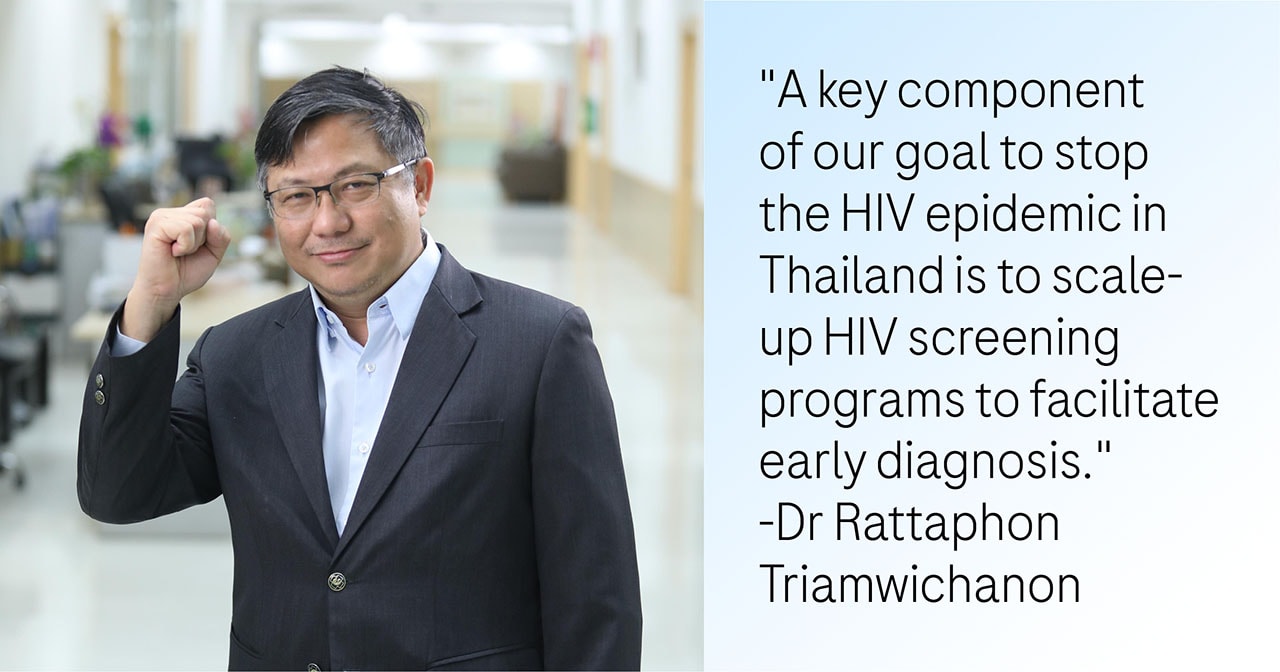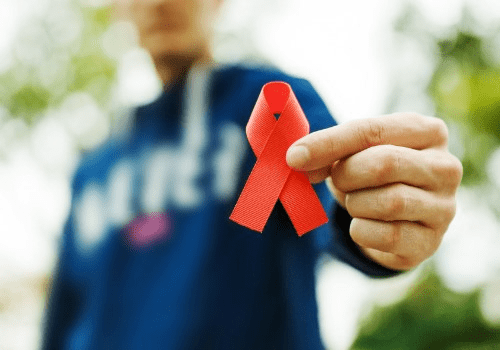Dr Rattaphon Triamwichanon, senior expert of the National Health Security Office (NHSO) highlights the lessons learned and the critical role of policymaking in the elimination of HIV/AIDS.

In the global fight against the spread of HIV/AIDS, there are few success stories. Thailand is one of them. The country’s ability to avert an epidemic through a nationwide prevention campaign, launched in the early 90s, has dramatically cut the spread of the disease. Awareness campaigns along with civil society initiatives, and preventive measures reduced the annual number of new HIV infections from 115,000 in 1992 to 6,600 cases in 2021.1,2
As progress against HIV continues to be uneven in Asia and the Pacific, Thailand has emerged as a learning centre for developing nations in the region. Dr Rattaphon Triamwichanon, senior expert of the National Health Security Office (NHSO) shares the lessons and challenges in Thailand’s public policy on HIV/AIDS.
Thailand has made significant efforts to reduce HIV/AIDS transmission and deaths. In your view, how has diagnostics aided Thailand’s strategy to eliminate HIV by 2030?
Thailand has been a pioneer in reducing the incidence of new infections significantly over the last two decades. Building upon this remarkable success, Thailand has set an ambitious goal to stop the HIV/AIDS epidemic in the country by 2030. A key component is the scale-up of HIV screening programs to facilitate early diagnosis.
HIV diagnosis is not as difficult as it used to be. Although it’s still expensive, we now have HIV self-test kits, making it easier for people to know their own HIV status and seek protection by using a preventive HIV drug, Pre-exposure prophylaxis (PrEP). What Thailand needs now is to increase the support for self-testing. The Covid-19 crisis made us aware that people are more welcoming to the use of self-test kits. It’s easy and many are not afraid to test themselves. The government’s budgeting support for free diagnostic tests, especially for the section of the community most at risk, would be a major strategy in eliminating HIV in Thailand.
Are policy interventions critical to eliminating this disease? How important is the role of policymakers and health administrators?
Policymaking is key to disease elimination. Policymakers, especially in the government sector like the National AIDS committee are of utmost importance. They establish the framework and policies for all relevant parties to work together seamlessly. In Thailand, there aren’t enough public health personnel so having knowledgeable lay providers to manage services for target groups is required. The policy, however, has to be clear and practical to allow civil society organisations to be service providers as well. These organisations, known as the Key Population-Led Health Services (KPLHS), are accredited and have direct access to the target population. They are supported by our Universal Health Coverage (UHC) in the same way as hospitals and clinics. So we can say that Thailand is leading the way in tangibly turning civil society groups into service co-providers.

A one-size-fits-all model does not work with all HIV patients. What steps have been taken to redesign the healthcare delivery model so it’s more patient-centric?
Studies show that each target group has different behaviors with different service needs. For instance, the HIV drug, PrEP, that is designed to be taken daily may not be practical for everyone. Similarly, condoms may not be accessible in some areas. Therefore, we have to develop practices that fit and cater to the real needs of each target group. Having different guidelines for different target groups is necessary. This can be achieved through on ground research and observation, including studying the online behaviors of the target groups. Accordingly, we then adjust the executive policy and design a proper budget and compensation scheme.
Are there any government initiatives or programs to address the problem of stigma and discrimination?
People living with HIV in Thailand still face stigma and discrimination to some degree. However, the social context in Thailand can be regarded as an opportunity to manage this issue as we tend to stigmatise LGBTQ individuals less than other societies. This is a good opportunity for the LGBTQ community to join forces and provide HIV support and services. It should be backed by a strong message that people living with HIV can live normally, just like many others with chronic diseases.
What is Thailand’s roadmap to eliminate HIV by 2030?
As we aim to achieve the 95-95-95 goals, strong and inclusive Universal Healthcare Coverage (UHC) governance with a resilient health system greatly accelerates our progress. The Department of Disease Control, as the Secretary of the National AIDS Prevention and Alleviation Committee, oversee the policy development while UHC ensures these policies translate into practical solutions including the provision of condoms, preventative drugs, and treatment medicine. We also have a National AIDS Program for individual record collection with privacy protection, and a centralised purchasing scheme for the best possible bargaining power. Through our intervention programs and health benefit schemes, we want to provide free and affordable healthcare access to all Thai citizens.
References:
- Punyacharoensin, Narat, and Chukiat Viwatwongkasem. 2009. “Trends in Three Decades of HIV/AIDS Epidemic in Thailand by Nonparametric Backcalculation Method.” AIDS 23 (9): 1143–52. https://doi.org/10.1097/qad.0b013e32832baa1c.
- Data book 2021. UNAIDS; https://www.unaids.org/sites/default/files/media_asset/JC3032_AIDS_Data_book_2021_En.pdf














